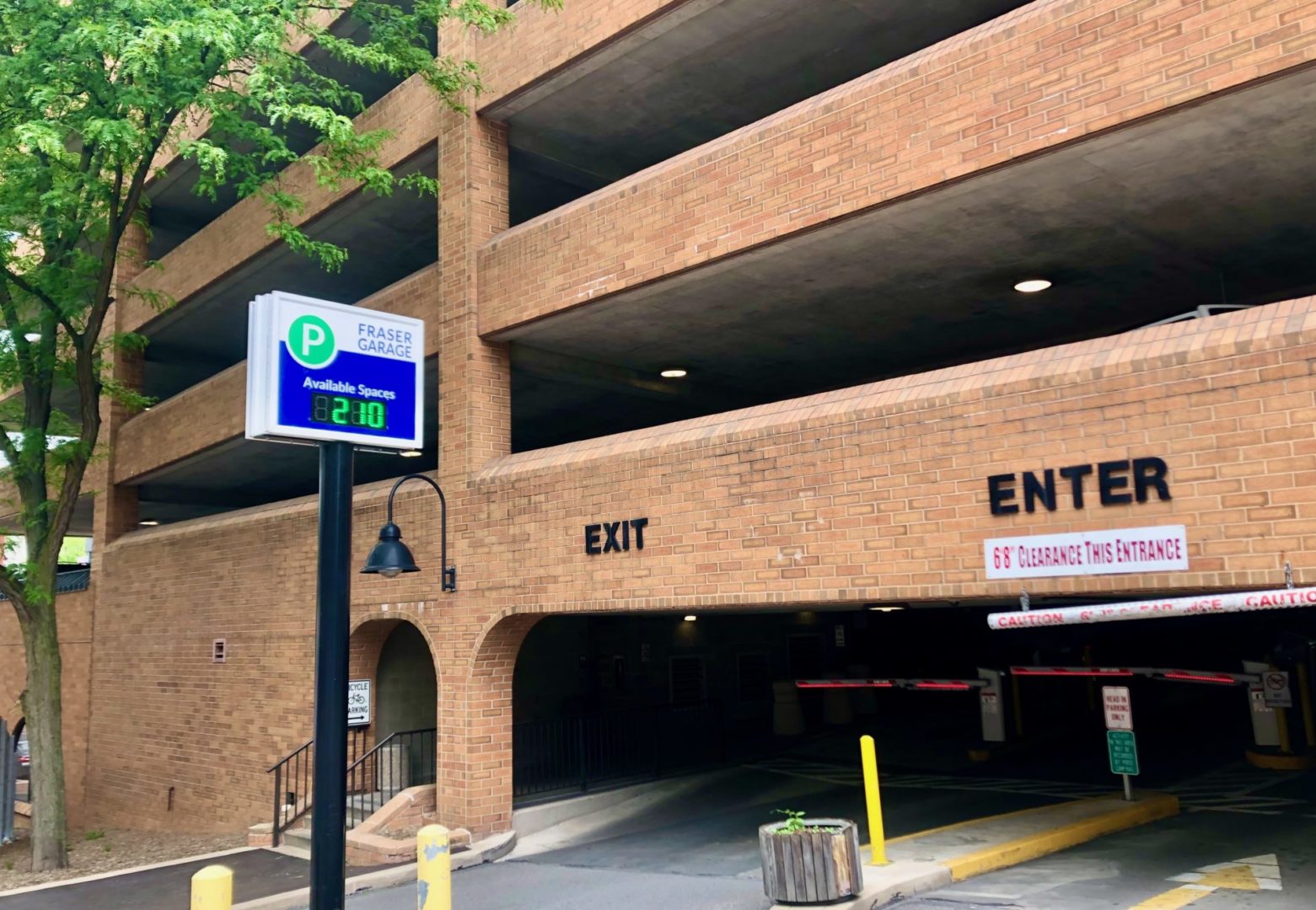
Fraser Street Parking Garage in State College. Photo by Geoff Rushton | StateCollege.com

Fraser Street Parking Garage in State College. Photo by Geoff Rushton | StateCollege.com
Here’s something I’m not really proud of: I only rode my bike to class twice last semester.
I love riding my bike the 4 miles from my house in Park Forest to my classroom on campus. It’s fun. It’s good exercise. It saves me money on parking. It only takes two extra minutes door-to-door compared to driving (26 vs. 24 minutes). And it’s a small thing that I can do that’s good for the environment. It checks every box.
By comparison, in the fall semester, I ride to class almost every day. It’s a different story from January through April.
It’s cold.
It’s dark.
And at a dollar an hour to park in the Fraser Street Garage so I can go teach in Hammond, it’s also too easy. It’s like fast food— just $6 to $7 per day, cheap and easy.
But just like fast food, driving is bad for my health and the environment. It should be an occasional thing I do, not my default. I wish I was more incentivized to bike or ride the bus.
So what if State College charged more for parking—not just for my health and the environment, but also because of the many other good things it has the possibility of bringing to town?
When I moved back to State College after living in New York City, I remember thinking a dollar an hour for parking felt basically free. Seven years later, I still feel that way. I can’t remember once deciding to avoid downtown because of the cost of parking.
I know some people will disagree with that statement. I know parking and paying for parking is a huge issue for some. But for me, it’s not.
To put this in perspective (and convince you to go down this theoretical road with me), here are two statistics that really jumped out at me when I was researching this topic:
We quite literally value parking over housing. That’s just silly.
Aside from football, move-in or graduation weekends, I never have a problem finding a parking spot. I just park in the garage downtown closest to where I need to be and am happy to pay the $2, $3 or $10 it costs to park. I think it’s a great deal.
And though I’ve never hopped on the bus from Park Forest to go anywhere, State College has a fairly high ridership per capita rating of 81.2, according to 2019 data from the American Public Transportation Association.
But to really push me to bike or bus to campus from January to April, I need it to be a lot harder to drive. Increasing the cost to park would do that instantly.
Now, this opinion definitely comes with some caveats.
For one, we still need to offer affordable parking for residents. We could do this by increasing bus service to the parking lots just outside of downtown, like at the stadiums.
Additionally, I don’t think we should increase the parking rate all the time and every day of the week. In fact, I think the cost should increase so that it becomes cheaper during other times, like weekend mornings and afternoons. Most Sundays are already free, but how much more foot traffic from families would we see if parking was free from 8 a.m. to 4 p.m. on Saturdays? (But not, I’m sure we’ll all agree, on football Saturdays.)
And what if we designated some reduced rate parking downtown for moms with strollers or seniors running errands downtown just like we offer free street parking to motorcycles?
What if we just try it for a year and see what happens?
I stole most of these ideas from Donald Shoup and his 765-page book called “The High Cost of Free Parking.”
I can’t admit I’ve read it cover-to-cover, but he has three primary recommendations:
Increasing the cost of parking checks off numbers 2 and 3. Number 1 requires a bit more clarification.
Shoup argues that eliminating minimum parking requirements—like they did in Ithaca, South Bend and Lancaster — will lower the cost of new development and rents.
To understand this better, I consulted with James Graef, a State College local who served on the borough’s Transportation Commission and put together a comprehensive and thoughtful report about making State College more walkable.
In broad strokes, State College Borough requires developers to include parking with any new construction downtown. This increases the cost of construction by about 17%, which means many developments don’t make financial sense and don’t get built—like, for example, ones with more affordable rents.
Eliminating minimum parking requirements could also allow us some creative leeway with the parking we already have downtown, like transforming the parking lot in front of Five Guys into a pedestrian plaza.
If you don’t like the idea of giving developers a break, I get that too. Instead, we could replace minimum parking requirements with transit requirements. New developments would have to pay for increased bus service, for example.
The long and short is that driving is still too easy. If we make driving harder, downtown becomes safer, quieter, less congested, less polluted, and more walkable and bikeable. If that vision costs me more to park, I’m happy to pay—or hop on my bike.
Brad Groznik is an assistant teaching professor in Penn State’s Engineering Entrepreneurship program. He is also part of a team launching RediscoverStateCollege.com. All opinions are his own.
Receive all the latest news and events right to your inbox.

80% of consumers turn to directories with reviews to find a local business.